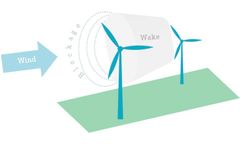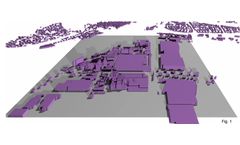Wind And Turbulence Articles & Analysis
8 articles found
The importance of taking into account wake and blockage effects when assessing wind farm energy production. Since DNV published the consequences of neglecting blockage and its impact on energy production [1], and Orsted presented an update of its long-term financial targets taking into account the blockage and wake effects [2], these two effects have become one of the hottest topics in the ...
For dispersion calculations in accordance with the Technical Instructions on Air Quality Control (TA-Luft), meteorological data is generally used that is either measured at the site or, if no on-site measurements are available, transferred there (QPR) or based on model calculations.Meteorological data has to be transferred in accordance with guideline VDI 3783 Part 20 (2017). Since meteorological ...
In wind energy projects, obtaining precise and reliable wind resource data is crucial, yet the available data often remains limited in both time and space. ...
For instance, (i) the wind shear and turbulence greatly impact wake and turbine performance losses, (ii) temperature and thermal stability play an important role in predicting wake, high wind hysteresis and icing losses, while (iii) relative humidity and precipitation also have major influences on icing losses. ...
The highly variable performance of artificial monolayers in reducing evaporation from water storages has been attributed to wind speed and wave turbulence. Other factors operating at the interfacial boundary layer have seldom been considered. In this paper, two physical shade covers differing in porosity and reflectivity were suspended over 10 m diameter ...
Abstract Complex terrain and growing wind energy converters (WEC) in wind parks generate increasing interest in determining wind profiles and turbulence besides the general forecast of annual energy production. Increasing hub heights and growing rotor diameters of advanced WEC make SODAR systems a valuable alternative to ...
Many bridges are located at especially unfavourable places considering the local wind power and turbulence. Therefore it turns out that finding an optimal balance between structural safety and erection costs depends strongly on a proper wind modelling and investigation. Several aspects must be taken into account for the wind ...
The rise and fall of the sea surface due to tides effectively moves an offshore wind turbine hub through the wind shear profile. This effect is quantified using measured data from three offshore UK sites. Statistical evidence of the influence of tide on mean wind speed and turbulence is presented. The implications of this effect ...







